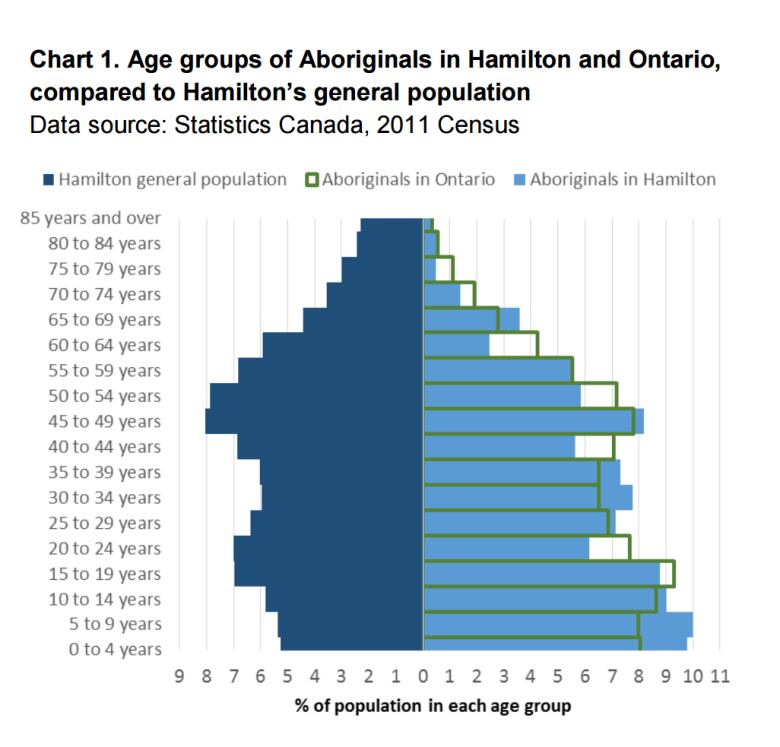Sixties Scoop shapes Hamilton's aboriginal demography
Hamilton's large population of aboriginal people aged 45 to 49 linked to 1960s practice, report says

Sixties Scoop, the forced adoption and relocation of aboriginal children, went on from the 1960s to 1980s. Its lasting impact, however, is still shaping the faces of Hamilton's native community today.
According to data from Statistics Canada's 2011 census, Hamilton's aboriginal population aged 45 to 49 (those born between 1961 to 1966) is substantially larger than the age groups immediately older and younger.

The unique demographic makeup may be traced back to the adoption of young children from the Six Nations reserve and other aboriginal communities across Canada into Hamilton and surrounding areas, according to a recent report from the Social Planning and Research Council of Hamilton (SPRC).
"Just as the closing of the residential schools did not mean their legacy of suffering instantly vanished, so the end of the Sixties Scoop did not mean that all the native adoptees who were farmed out to abusive or alienating non-native families suddenly found themselves with a clear-cut identity or a secure place in society," the report said.
The report paints a profile of the population, education, employment, poverty rates and housing of aboriginal residents in Hamilton. The city, which is located on traditional Haudenosaunee Territory, has a border that is only 10 kilometres away from Canada's largest reserve, Six Nations of the Grand River.
The practice of Sixties Scoop gets its name from the 1960s, which was the height of a common practice by child welfare agencies to remove aboriginal children from their families, usually without their parents' or band's consent, according to the SPRC.
The children were thenplaced with mostly white families. As a result, many lost touch with their culture and traditional language.
It's believed somewhere between 11,000 and 20,000 aboriginal children were removed and placed with new families in Canada, the U.S. andEurope.The estimates vary greatly because it was believed that many aboriginal children were not recorded asstatus Indianin their child services records.
ManitobaPremierGregSelinger delivered an apology on Thursday to those caught in the Sixties Scoop the first public apology from a government.












_(720p).jpg)


 OFFICIAL HD MUSIC VIDEO.jpg)
.jpg)



























































































